7 most WEIRD Russian eating habits
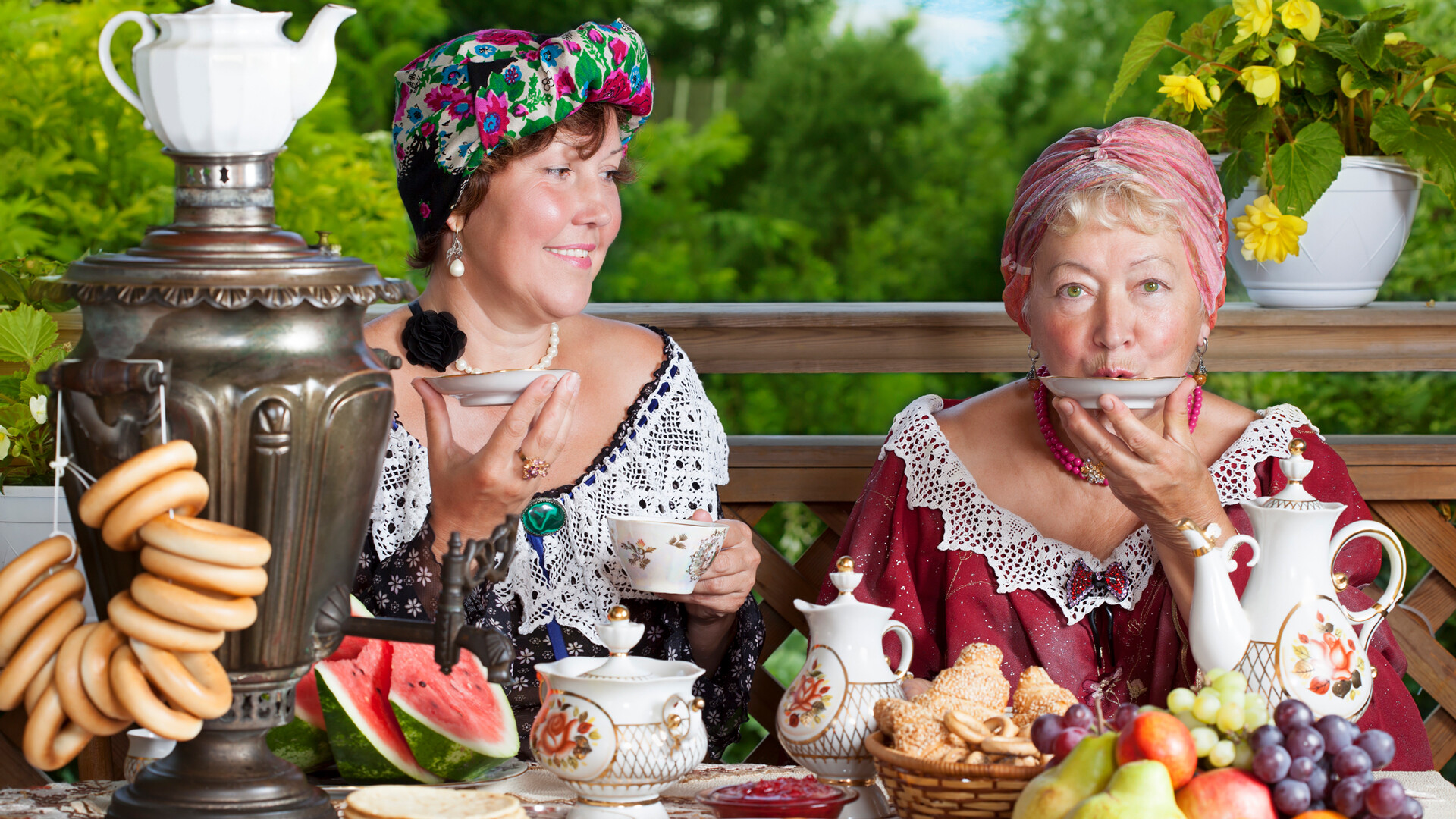
1. Eating everything with bread
 Eating a butterbrot. A still from 'Three from Prostokvashino' animated movie
Eating a butterbrot. A still from 'Three from Prostokvashino' animated movie
Almost every Russian has bread at home. That’s because of several reasons. Firstly, Russians love sandwiches. Or, to be more accurate, its “Russian” version, which is called ‘butterbrot’ (from German ‘butter’ + ‘bread’). Usually, a butterbrot is really just a slice of bread, butter (optional) and something easy to put on it – a slice of sausage or cheese (or with red caviar on New Year’s Eve). It should be very fast to make.
However, a butterbrot can’t be considered as a true self-reliant meal, only a snack. “Don’t eat dry!” a Russian babushka or mom would often say. That’s why a butterbrot should always be accomplished with tea, coffee or some other drink.
There are also sweet butterbrots. A typical Soviet “fast” breakfast could be a butterbrot with blackcurrant jam. This berry was always in abundance, so Russians used to make a lot of jams with it (Read more about the phenomenon of Russian butterbrot here).
 A giant butterbrot with cranberry jam. A still from 'The Girls' movie
A giant butterbrot with cranberry jam. A still from 'The Girls' movie
Secondly, bread has always been a staple accompaniment to most foods and dishes, be it lunch or dinner, soup (for sure!) or a main course. The roots of this habit lie deep in history – many Soviet regions used to suffer from hunger before and during World War II. So, bread, a traditional Russian food, became a superfood – a caloric supplement to every dish or sometimes the only thing people ate for months.
Some babushkas who saw the war would eat even watermelon with bread! Modern young Russians, on the contrary, now usually refuse bread as something that encourages weight gain and interferes with staying fit.
2. No soup – no proper lunch
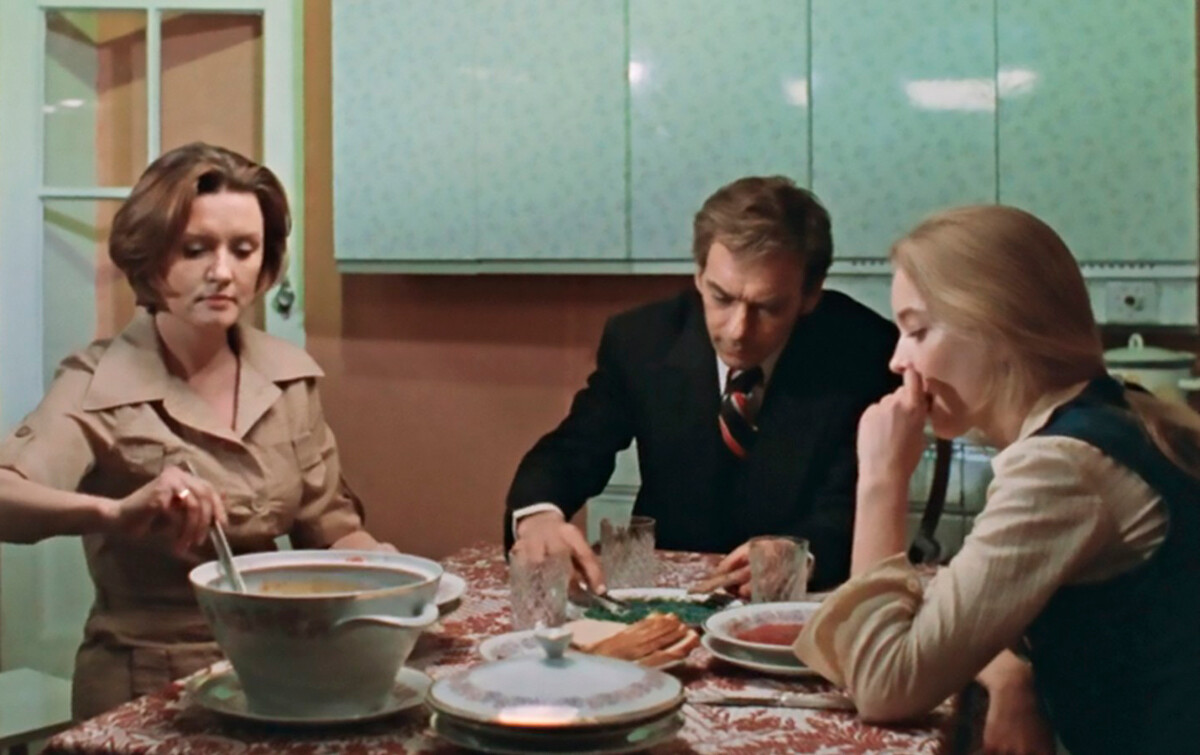 Eating soup is a must. A still from 'Moscow Doesn't Believe in Tears' movie
Eating soup is a must. A still from 'Moscow Doesn't Believe in Tears' movie
A traditional Soviet lunch would usually consist of a three course meal and a sweet fruit compote drink. Salad + soup + main course. That’s usually what’s on offer on the lunch menu of any Russian restaurant.
Salad with vegetables and sunflower oil or mayonnaise is good for digestion. Soup is full of healthy fats, while the hot liquid warms you up. And the main course is a great serving of carbohydrates and proteins (pasta and chicken, mashed potatoes with meat, rice with fish and so on). And, finally, a sweet drink from berries or fruits adds the necessary vitamins.
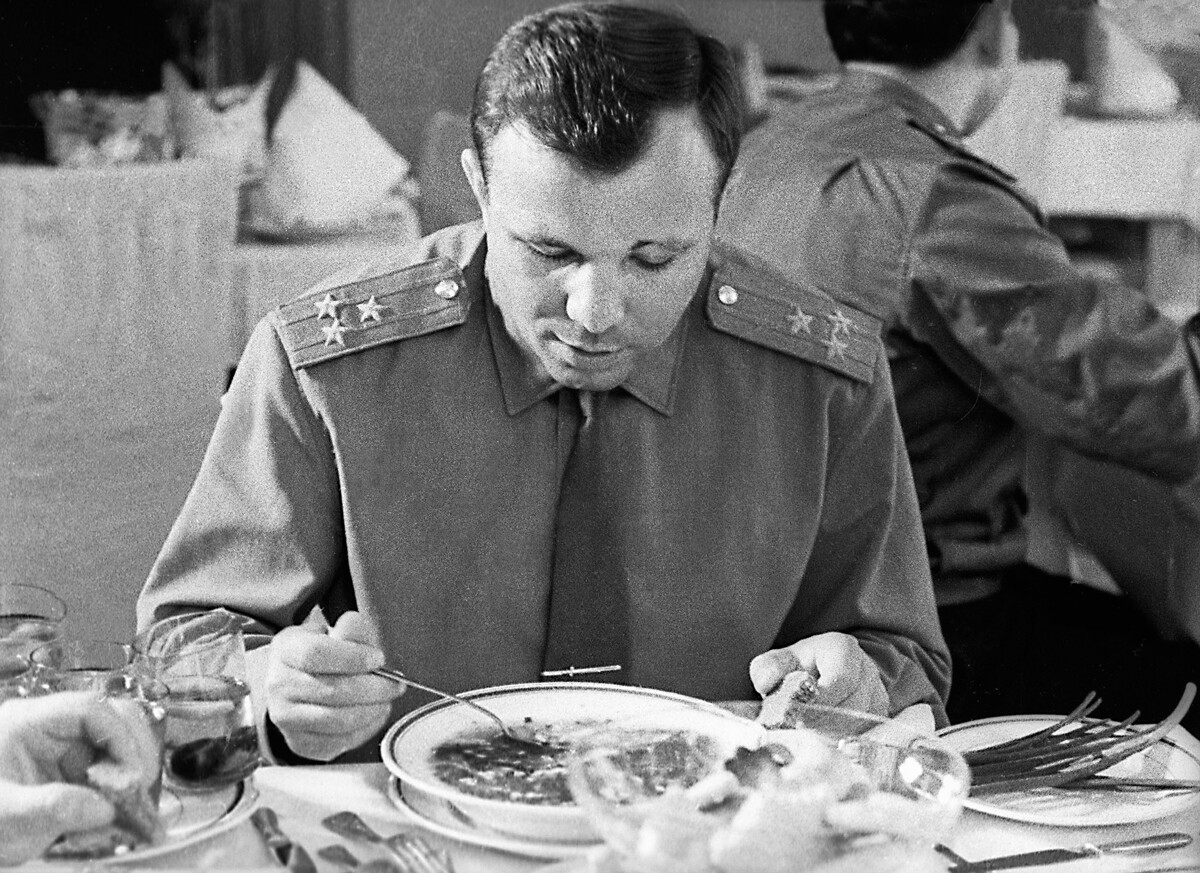 Cosmonaut Yury Gagarin eating soup in a Soviet canteen, 1964
Cosmonaut Yury Gagarin eating soup in a Soviet canteen, 1964
Such three-course meals were created by Soviet authorities for factory workers, as they needed to have enough energy for the working day. Meanwhile, the scheme proved so popular that students, children in kindergartens and just office workers also started to eat the same meals.
Russians have two popular proverbs: “Bread is the head of everything” and “Soup is the head of everything”. So, without rich, hot soup, a lunch is considered not full. With that said, small kids usually only eat soup for lunch. It’s an easy way to give them fatty acids, fiber from vegetables, as well as liquid intake, because they usually don’t drink much.
There are many soups that Russians like to cook and eat: borsch with beetroot, shchi with cabbage or sour cabbage, pea soup, fish soup (from cheap canned fish, as well) and chicken soup with noodles (Find more soups here.)
3. Weird hot & cold ‘soups’
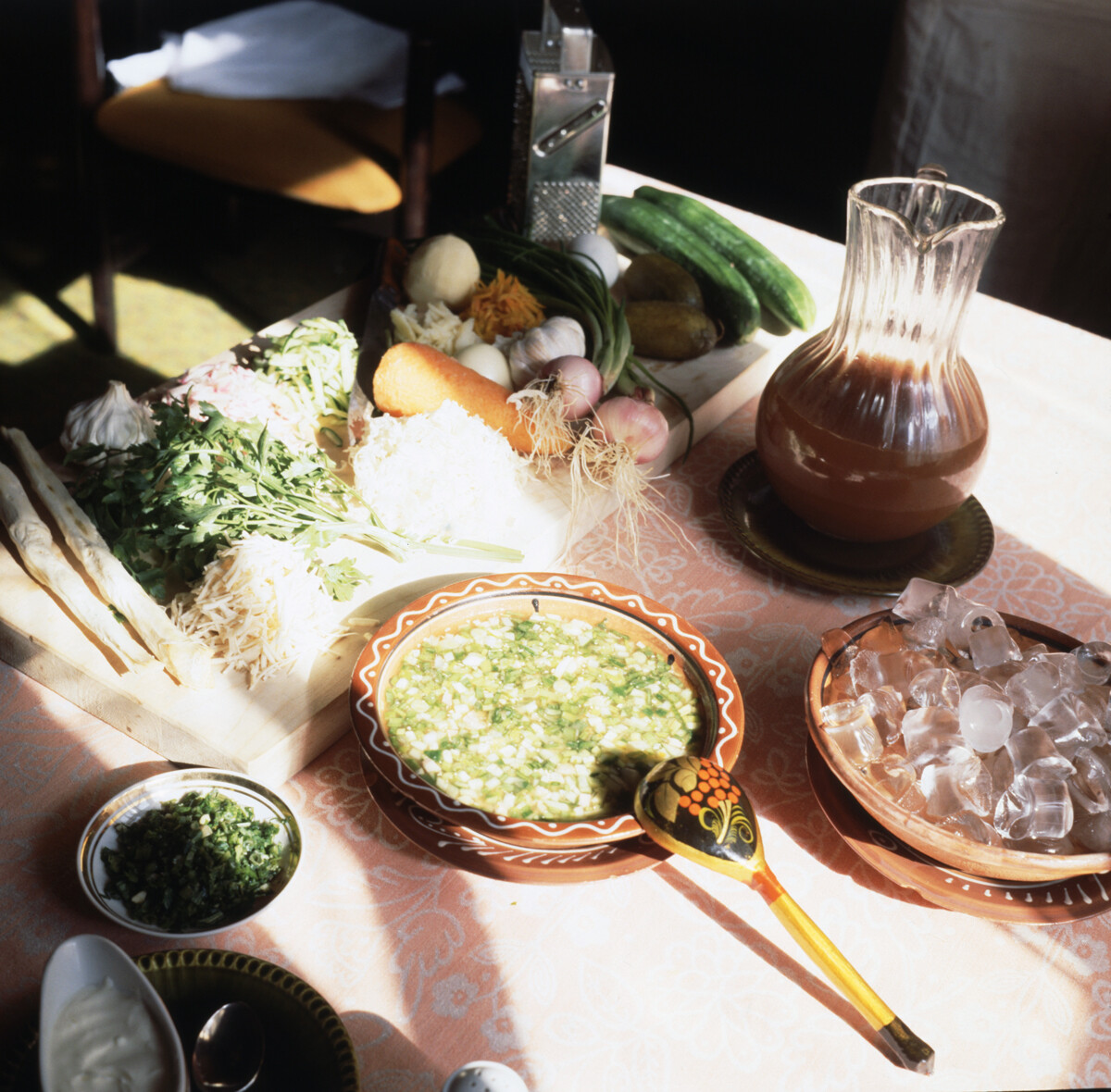 Okroshka, a cold soup with kvass
Okroshka, a cold soup with kvass
In the hot summer, not many like eating hot soups… However, they got used to a liquid lunch meal. That’s why Russians created a cool alternative – a summer soup called ‘okroshka’. It consists of chopped boiled eggs, fresh vegetables (cucumbers, lots of greenery, radish) and some boiled meat or sausages. And this mixture of ingredients is then poured over with a fermented drink – kvas or kefir! Most foreigners usually can’t stand this weird dish, at first… but then get used to it and love it (however, there are some that still refuse to even look at it!)!
 A three course meal in a Soviet canteen at a factory, 1972
A three course meal in a Soviet canteen at a factory, 1972
Our foreign readers are often surprised that Russians even eat soup for breakfast (This actually doesn’t happen often and most likely refers to hangover “soup eating”!)! But, there is another crazy soup-like dish, which is often served to children for breakfast. It’s milk with noodles (Literally warm milk with any pasta)!
4. Adding sugar to… anything!
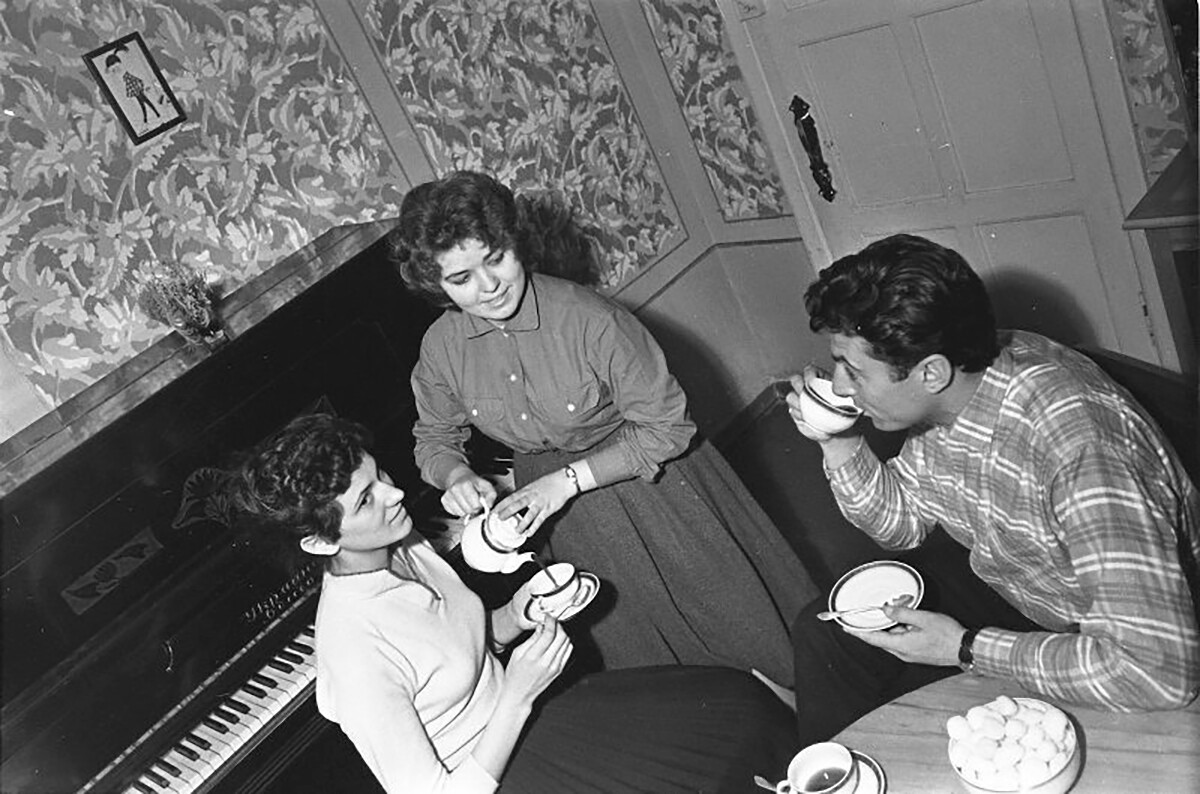 A Soviet tradition - long tea nights
A Soviet tradition - long tea nights
Besides adding milk to pasta, pasta can also be eaten with… a sprinkle of sugar! That sounds insane, but many Russian kids truly love this simple dish. And if your kid eats poorly, it’s considered a great way to add calories to a meal. And if you’re on a small budget, it’s both dinner and dessert on one plate!
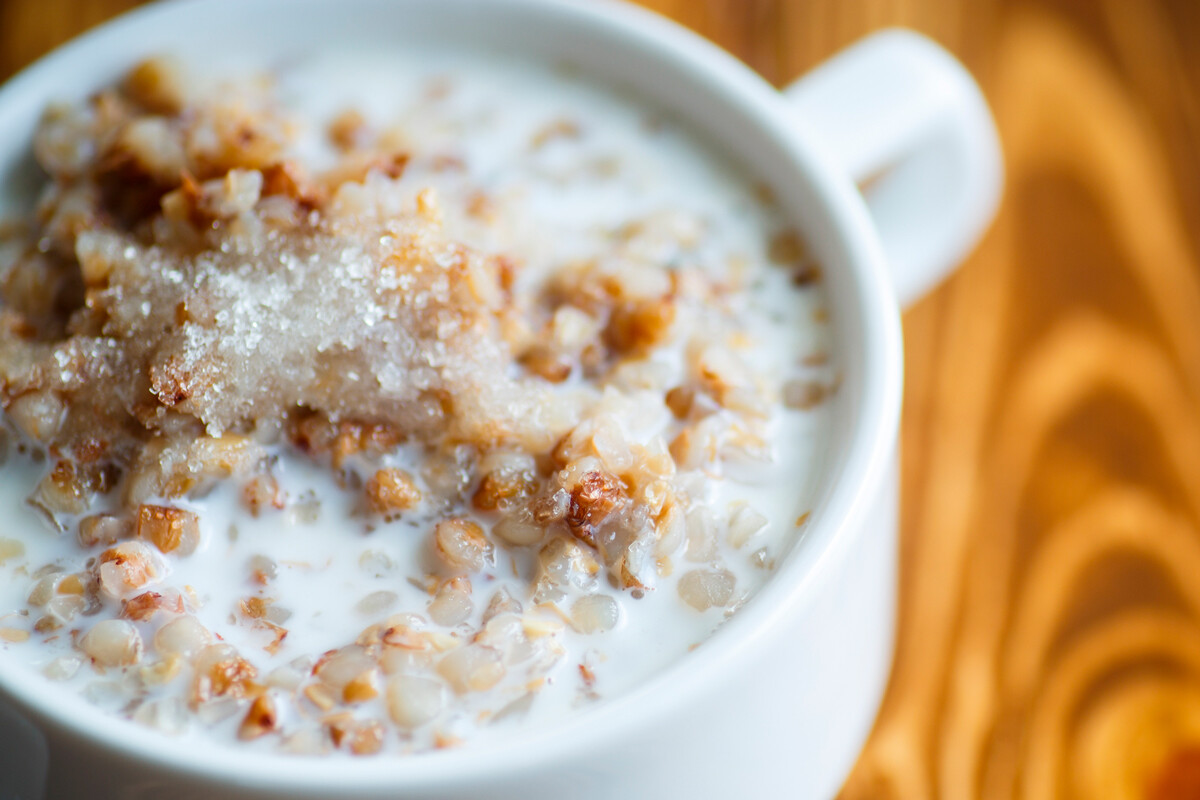 Buckwheat with milk and sugar
Buckwheat with milk and sugar
Sugar could be also added to buckwheat, millet or any other porridge, including oats. But, also on bread, in soup (to make it less sour) or pretty much on anything, including omelets, ‘tvorog’ cottage cheese and many other dishes. If you lack fresh products, especially fruits and vegetables, during the long cold winter, as the Soviets often lacked, it’s an easy and cheap way to make everything taste better.
5. Eating everything & not wasting food!
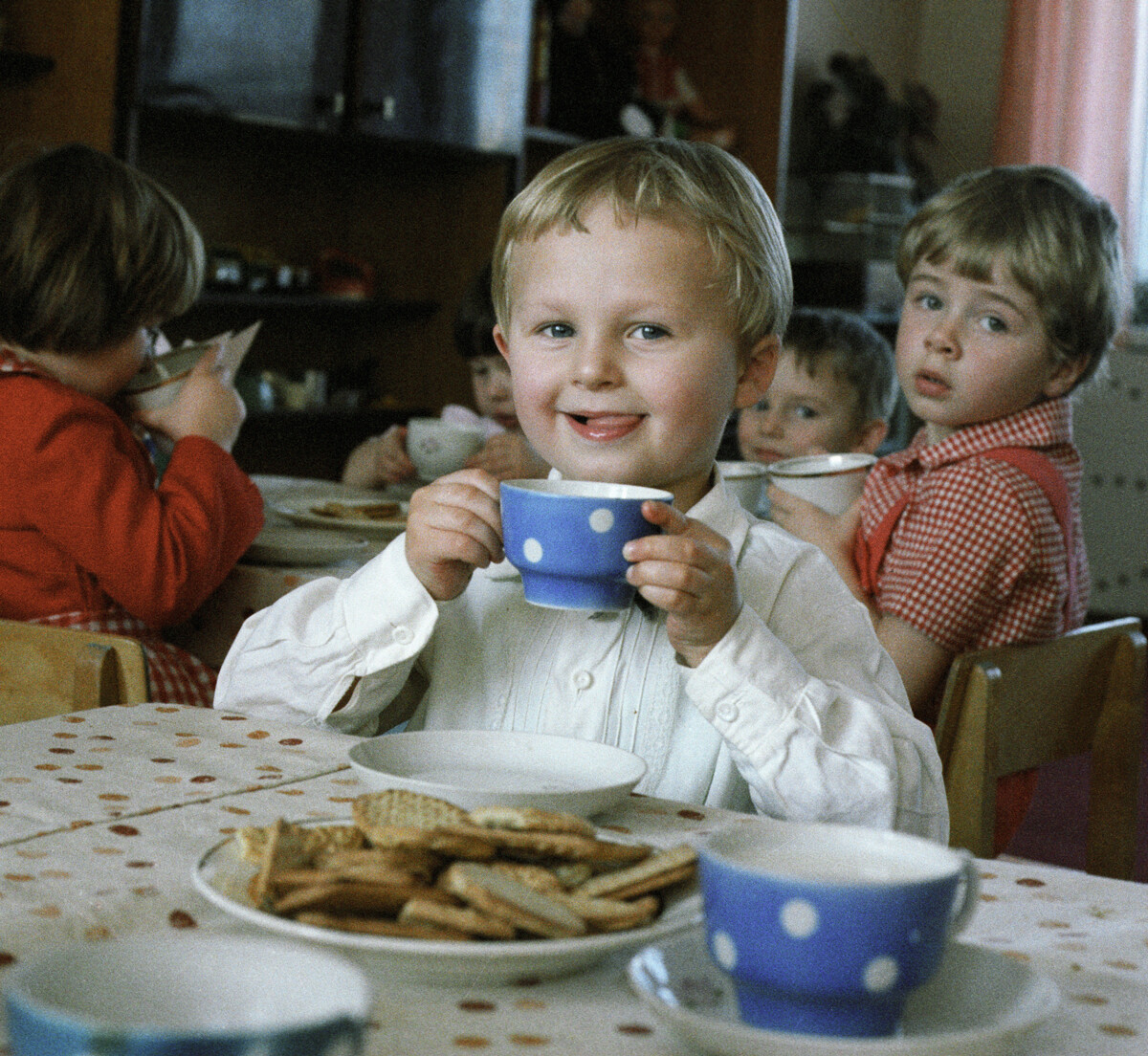 Having a snack at kindergarten
Having a snack at kindergarten
These days, many young Russians suffer from eating disorders. And while psychologists advise people to stop eating when they are full, many can’t leave anything on plate, because that’s what their grandparents and parents taught them!
People who’ve learned about the early Soviet era of famine and especially the Siege of Leningrad know – that food can not be left to waste, because it’s not clear when the next time you will get to eat.
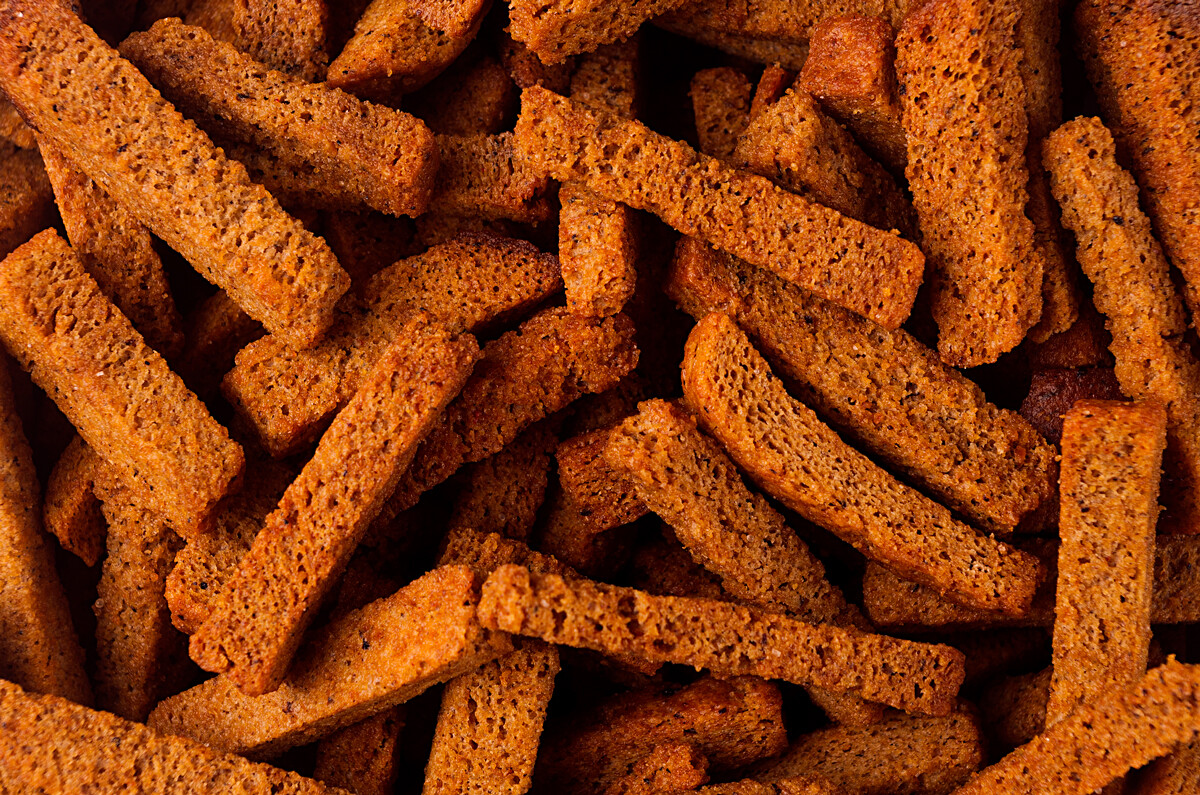 Croutons made from yesterday's bread
Croutons made from yesterday's bread
Moms would often yell at kids if they left food on their plate, because it was considered wasting money and disrespectful towards the cook (ie. your mom or grandma), not to mention an insult to all the millions of starving in the world!
Wasting bread, meanwhile, was and still is considered a sin! That’s why stale bread would even be used for cooking (as crumbs for cutlets) or just fried to create croutons.
6. Fatty salads with mayo
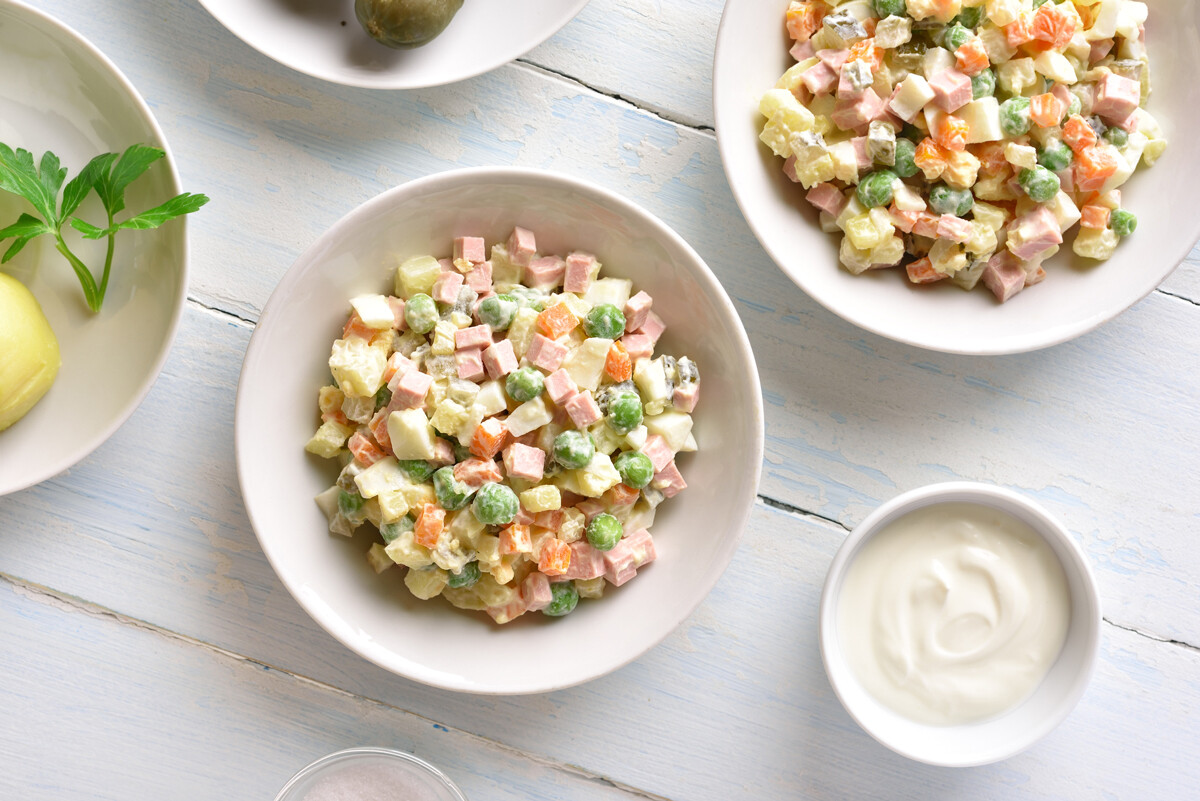 The 'Russian' salad (Olivier)
The 'Russian' salad (Olivier)
What is the first crazy dish that comes to mind when you think of Russian cuisine? Probably ‘herring under fur’ is one of them! “My least favorite food to eat is селедка под шубой [‘selyodka pod shuboy’],” a reader wrote us on our Telegram channel.
This controversial, but still very popular salad consists of oily and salty herring covered with a “fur” of grounded boiled beetroots, potatoes and carrots and a large dollop of mayonnaise.
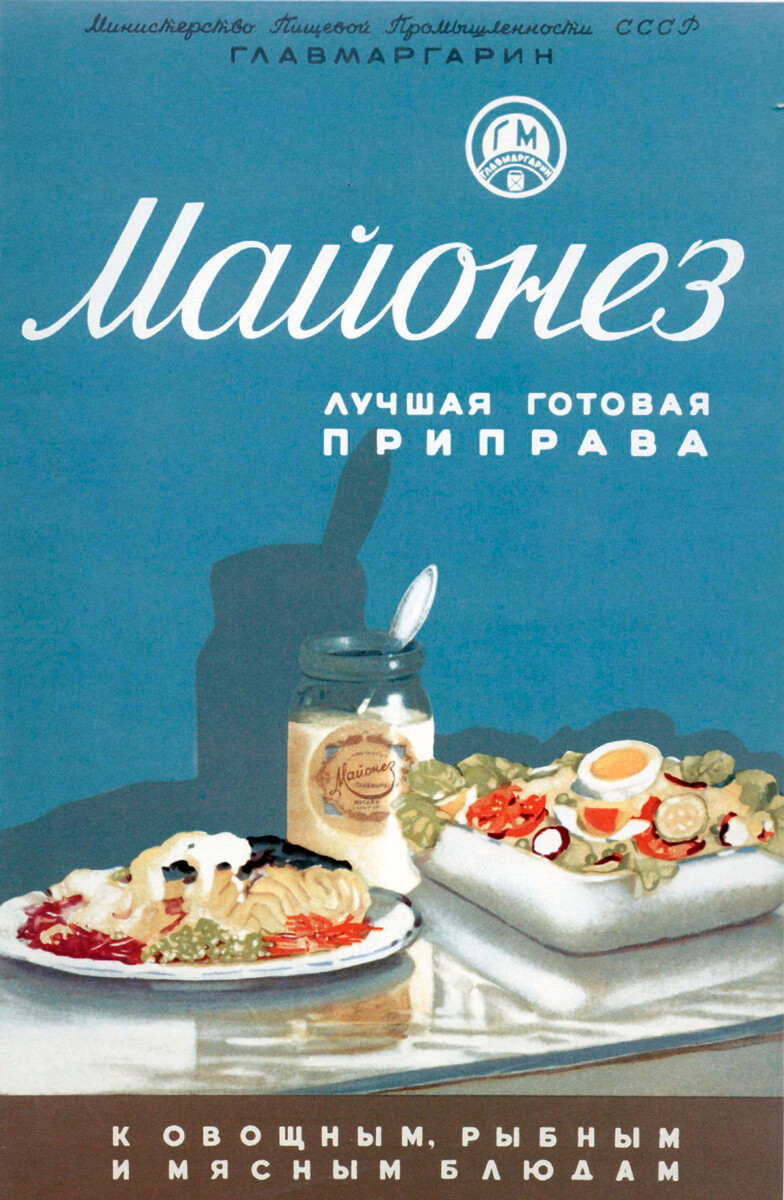 A Soviet poster advertising mayo
A Soviet poster advertising mayo
Actually, there’s a huge list of salads that Soviet housewives added mayo to (and still actually make to this day). And every house “chef” had their own specialty dish that was cooked by mixing often very strange and surprising ingredients! Vegetables, meat, rice, fish, etc… there could be all sorts mixed together in one bowl and because of mayo… it actually all worked well together! Well, sorta!
7. Spending hours drinking tea with sweets
 Boris Kustodiev. The Merchant's Wife (1918)
Boris Kustodiev. The Merchant's Wife (1918)
“Russians eat lots of cakes and pies with various things inside and outside them,” another reader writes. And they are right! Russians are obsessed with pies and other pastries, cookies, chocolates and candies. If you pay a visit to a Russian, grab something “for tea” and you will be more than welcomed!
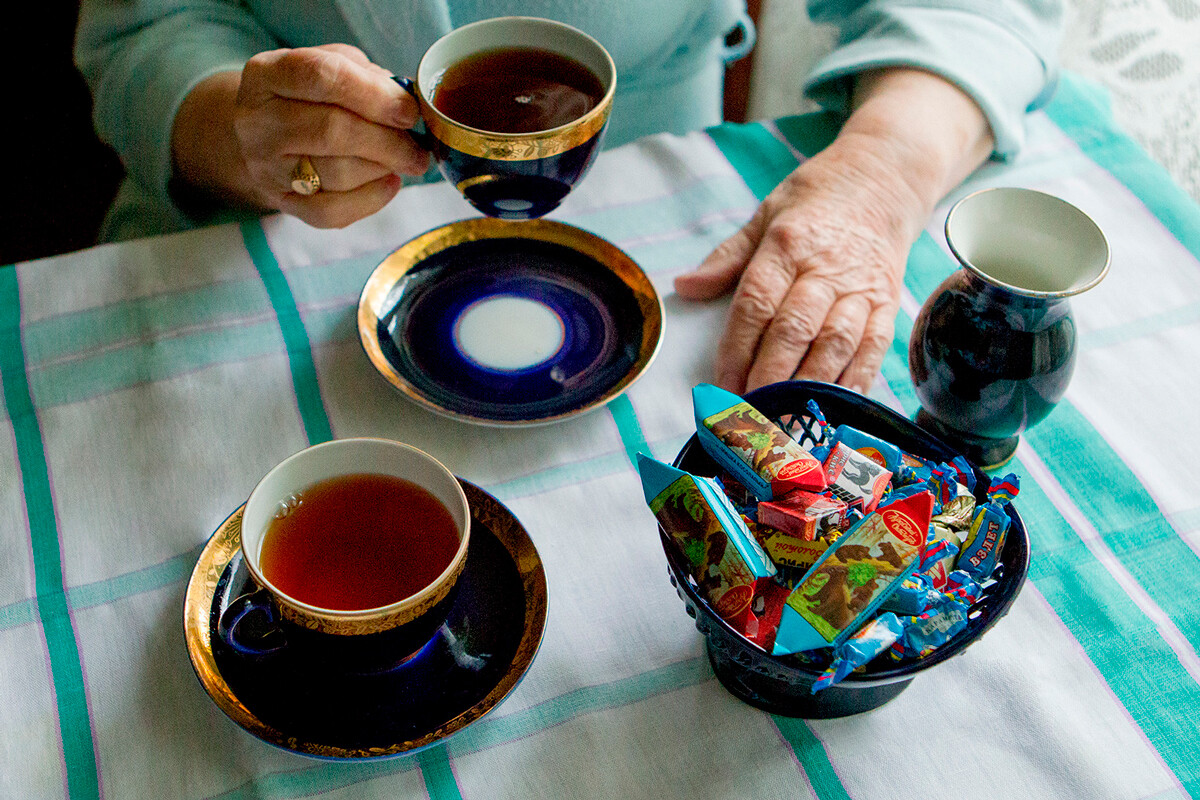 Tea with Soviet candies
Tea with Soviet candies
Drinking tea is a Russian national tradition and trait. Tea in the morning (yes, not coffee), tea for break time, tea after dinner or even instead of dinner. Tea is more than just drinking, it is about long, soulful kitchen talks. The tradition of long tea evenings is an old one, which appeared back in tsarist times, when people would warm up next to a ‘samovar’ (a large Russian metal tea pot), due to its huge amount of boiling water, while drinking tea and chatting.
Read more: It’s tea, not vodka – Russia’s national drink


